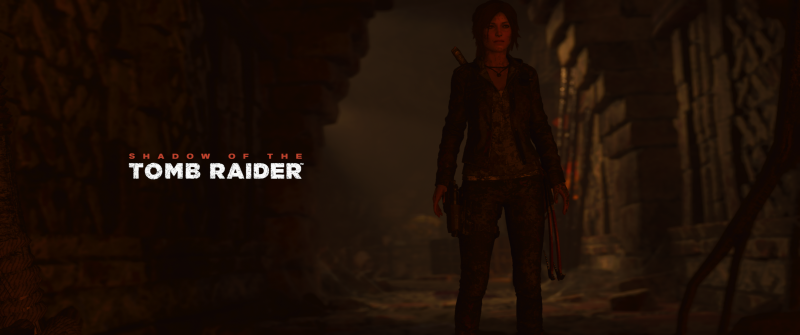Shadow of the Tomb Raider: Taking a Look at Performance with the Minimum and Recommended Spec Graphics Cards

Since the reboot of Tomb Raider in 2013, it has quickly become one of my all-time favorite franchises. This is especially so when it comes to Rise of the Tomb Raider, a game I consider one of the best visual experiences on PC. Of course, I used Rise of the Tomb Raider as my go to game for testing and evaluating performance of different graphics cards and gaming PCs. So, now that Shadow of the Tomb Raider has arrived, I’m curious to see the type of performance I can get when it comes to using the minimum and recommended spec graphics cards.
This article will focus on the NVIDIA cards specifically, as the minimum spec card for Shadow of the Tomb Raider is the GTX 1050 and the recommended spec is the GTX 1060 6GB. Now, let’s see what I can achieve with both of those cards in my current PC. The specs are as follows:
CPU: i7 5820k
Ram: 32GB DDR4
GPU: EVGA GeForce GTX 1050 SSC
GPU: EVGA GeForce GTX 1060 6GB FTW
Videos are recorded using GeForce Experience
Performance is captured using EVGA Precision X
Shadow of the Tomb Raider introduces players into another beautifully crafted world. So far, I’ve greatly enjoyed exploring the new locations, but I will mention that I haven’t felt overly impressed visually as I did when first playing Rise of the Tomb Raider. I feel that it’s on par but doesn’t seem to excel in any one place graphically over the previous title. Still, I consider Rise of the Tomb Raider one of the best visual experiences on PC, thus Shadow of the Tomb Raider continues that experience by being on par with it. Obviously, I’m excited to see how Ray Tracing can change this when the time comes.
Let’s start out the performance tests by taking a look at the minimum spec card for Shadow of the Tomb Raider, the GeForce GTX 1050. I only did one test with the card at 1080p as additional tests didn’t feel warranted. I obtained a nice 30 FPS with mid-range graphical settings which also left room to dial it back even more to further improve the FPS. The video below browses over my selected settings for performance and shares the FPS in the top left corner.
I do want to mention that while playing with the GTX 1050 for a short period of time I did encounter some performance drops when reaching new locations. These drops were only brief and would return back to normal rates fairly soon after. Other than that, it’s nice to see that Shadow of the Tomb Raider is mostly playable with the 1050. This includes leaving the Anti-aliasing on SMAAT2x while still remaining above 30 FPS. Although, as you saw from the video, turning off AA obviously provided more room for performance.
Note: A new driver was released for Shadow of the Tomb Raider shortly after I did this performance test. It’s possible the update could further stabilize the performance with the 1050. Additionally, turning off anti-aliasing seemed to stop the short performance drops from occurring when entering new locations.
Now let’s look at Shadow of the Tomb Raider using the recommended NVIDIA GeForce GTX 1060 6GB. With this card I can achieve anywhere from 30 FPS to 60 FPS depending on what settings I choose. Obviously, at 1080p and lowering a few settings allows me to hit 60 FPS. However, I can almost max everything and hit above 30 FPS. I can also achieve decent FPS at 1440p and 1440p ultrawide. Once again, each video will show the selected settings and achieved performance. I’ll let the videos do most of the talking from here on.
Shadow of the Tomb Raider using the GeForce GTX 1060 6GB
1080p, 60 FPS
1080p, 30 FPS (near) max settings
1440p, 30 FPS
1440p (3440×1440 ultrawide)
10 minutes of combat gameplay
The GTX 1060 6GB allows gamers with this card a lot of room for options when it comes to finding their sweet spot for quality/performance. For adventure games like Shadow of the Tomb Raider I’m just fine with staying just above 30 FPS if it keeps the quality looking clean and crisp. However, I tend to still aim for mid-40’s if possible. So far, I have mostly played Shadow of the Tomb Raider in 3440×1440 ultrawide resolution with the GTX 1060 6GB and have been quite satisfied. However, I must admit, I cannot wait to get my hands on the GTX 2080/2080Ti to witness the performance boost I get from those cards. Plus, I’m excited to test Ray Tracing when the time comes. Keep an eye out here or on my Twitter (@CaffeinatedGamr) for that coverage in the future.
Let’s do one last video, just for the heck of it. I still have my GeForce GTX Titan X (Maxwell) and decided to see what happens with everything maxed at 3440×1440 ultrawide resolution. Here’s the result:
3440×1440, max settings


I think my GTX 1050 Ti OC should be enough for this game. Thanks for the benchmarks.
alternative allergy treatment carcinoma of unknown primary
disease asthma allergy care
viagra without a doctor prescription
auto owner insurance auto insurance online auto insurance auto insurances
cheap car insurance companies cheap car insurance in georgia cheap car insurance quotes online best cheap car insurance companies
car insurances compare car insurance car insurances american auto insurance company